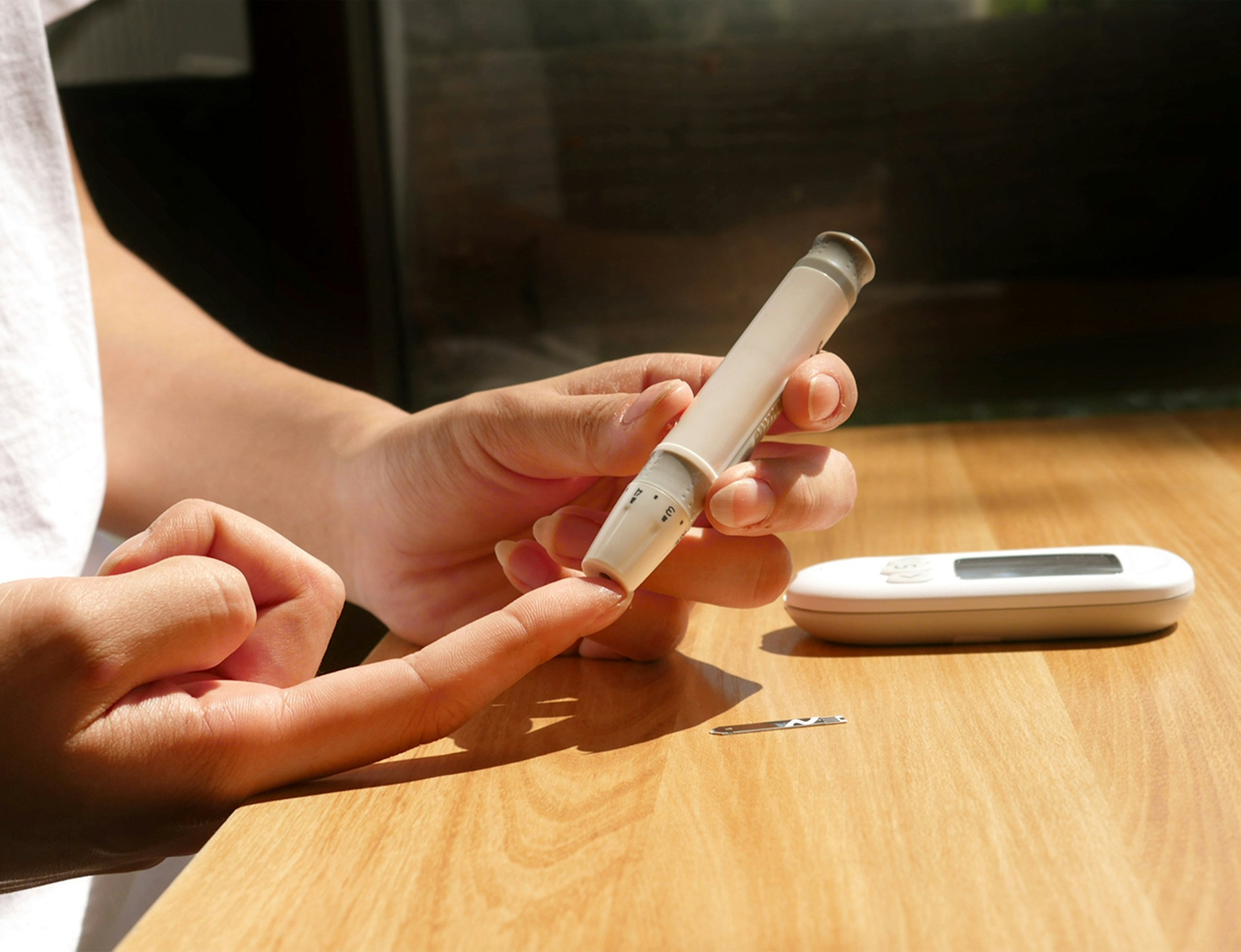DNA or Diet?
Diabetes affects 10–11% of adults globally, if we add those that are pre-diabetic the total comes to a staggering 20%.
Diabetes has now reach epidemic status and one in five of use are unable to regulate our blood sugar, risking long term problems such as: cardiovascular disease, kidney failure, Alzheimer’s and blindness.
Blood sugar is the measure of glucose in our bloodstream, which fuels our cells’ immediate energy needs, like money in your checking account. Only a small fraction of your total glucose is kept in the checking account at any one time. Extra glucose is stored in glycogen, like a savings account, for when it’s needed.

Two bankers, alpha cells and beta cells, look after these accounts:
If blood sugar drops too low, alpha cells release glucagon, which withdraws glucose from savings (glycogen stored in the liver and muscles) and deposits it into checking (blood, where energy is immediately available).
If blood sugar rises too high, beta cells release insulin, issuing instructions to move glucose out of checking (blood) and either deposit it into savings (glycogen stores) or send it to cells that can “spend” it as energy. This keeps the checking account (blood sugar) balanced, ensuring cells always have enough fuel to spend.

Photo by Elena Leya on Unsplash
With blood sugar now high, the pancreas keeps producing more insulin, overworking the beta-cell factory. If this continues, the factory can weaken or shut down, leaving the body unable to properly manage its checking account (blood) and control blood sugar.
Excess Carbs → Type 2 Diabetes
1. Excess carbohydrate intake
↓
2. Blood glucose rises (checking account overflows)
↓
3. Glycogen stores full (savings account limited)
↓
4. Pancreas releases insulin (banker issues instructions to cells)
↓
5. Cells already have enough energy.
↓
6. Extra glucose enters cells → inflammation & oxidative stress
↓
7. Insulin signalling impaired (signals jammed)
↓
8. Pancreas produces more insulin (beta cell factory overworked)
↓
9. Chronic insulin overproduction → insulin resistance
↓
10. Beta cells weaken → impaired insulin production
↓
11. Persistent high blood sugar → Type 2 Diabetes

Photo by Sangharsh Lohakare on Unsplash
Type 1 Diabetes (T1D)
T1D is different and while it can be made worse by excess consumption of carbohydrates, it cannot be caused by it. T1D is caused by genetics.
People who have T1D have a 90% probability of carrying a gene variation called HLA-DR3 or HLA-DR4.
The HLA-DR3 and DR4 variations are likely the cause of T1D because of how they present antigens (foreign bodies) to our immune system. In a process called molecular mimicry.
The DR3 and DR4 variations mistake a very common virus that 70% of the population will have at one time have called coxsackievirus B. They present this virus to our immune system in a way that tricks it into mistaking the virus for our pancreatic beta cells, which they start to attack.
Your body is now attacking the pancreas, destroying your beta cells, your ability to create insulin and regulate blood sugar.
Fortunately our gut creates a barrier which makes it hard for the coxsackievirus B to enter our bodies.
So how does this virus get into the body in the first instance?

Photo by REGINE THOLEN on Unsplash
How Wheat Can Damage Your Gut
Wheat contains a protein called gliadin, which is difficult to digest. Gliadin can sit on the gut lining and trigger an increase in zonulin, a protein that regulates gut permeability. Increased zonulin leads to a “leaky gut,” allowing more viruses, bacteria and proteins to cross the gut lining
Glyphosate
If wheat alone weren’t enough, commercial farming practices often worsen the problem. Glyphosate is sprayed on wheat to aid ripening before harvest. Glyphosate is considered carcinogenic, disrupts gut bacteria and increases gut permeability.
If we seal up the gut lining again this will reduce the chance of further retraining of the immune system to attack the pancreatic beta cells. The problem is that the reprogramming may be permanent.

Damage done?
Through molecular mimicry your immune system has now been trained to attack your pancreatic b cells.
Can we undo this training?
T cells are a part of our immune system that recognise and eliminate threats, we have a few different types of T-cells including:
Killer T-cells (an awesome name) – These are problematic to those with T1D as they have been reprogrammed to eliminate your pancreatic B cells, and as a result, your ability to make insulin is lost.
Regulator T-cells (T Regs) – These inhibit the killer T-cells helping to calm them.
If we can increase the number and quality of T-regs we can calm the immune response and reduce or potentially stop any further damage.
Next I’ll explain how you can achieve this and control the symptoms of T1D and T2D naturally.
T1D Specific
Nutrition Supplementation
Supplement with Vitamin D3, Omega 3, Curcumin – These nutrients can increase regulatory T cell (Treg) numbers, which helps calm aggressive killer T cells that attack pancreatic beta cells. Studies suggest this may help preserve remaining beta-cell function (links above).
T2D Specific
Nutrition/Supplementation:
Discuss using berberine with your medical practitioner, typical doses are 500mg, three times per day (so 1,500mg total). Berberine has been proven to increase insulin sensitivity similarly to metformin and also has the added bonus of improving gut function and flora and inducing AMPK which is a process that in part helps our cells take up more glucose, further reducing blood sugar levels.
Keto for All
Under the guidance of your medical professional and a nutritional practitioner, a low-carb or ketogenic diet can significantly reduce the need for insulin. Fat and ketones can supply nearly all of the body’s energy requirements.
In this study, participants with T1D were able to reduce insulin intake by up to 40% after just three months with no signs of ketoacodosis*.
In this study, 50% of participants with T2D who changed to a keto diet achieved complete remission within 3 years.
Carbohydrate sources: Focus on vegetables (nutrient-dense, low glycemic impact). Moderate fruit intake; avoid sugary drinks. Stick primarily to water.
*Ketoacidosis is a dangerous state affecting those with T1D, where due to little or no insulin, the body overproduces ketones, making the blood acidic and leading to a medical emergency.
Exercise
Aerobic Activity
Walking 30 minutes, three times per week can increase insulin sensitivity by 20–25%, helping with blood sugar management.
Whether diabetes is driven by genes, autoimmunity, or lifestyle, understanding the causes gives you power to act. Supporting your gut, managing carbs, using targeted nutrients, and staying active can protect your pancreas, improve insulin sensitivity, and keep blood sugar in check. Small, consistent changes can make a big difference helping you take control of your health and feel your best every day.





